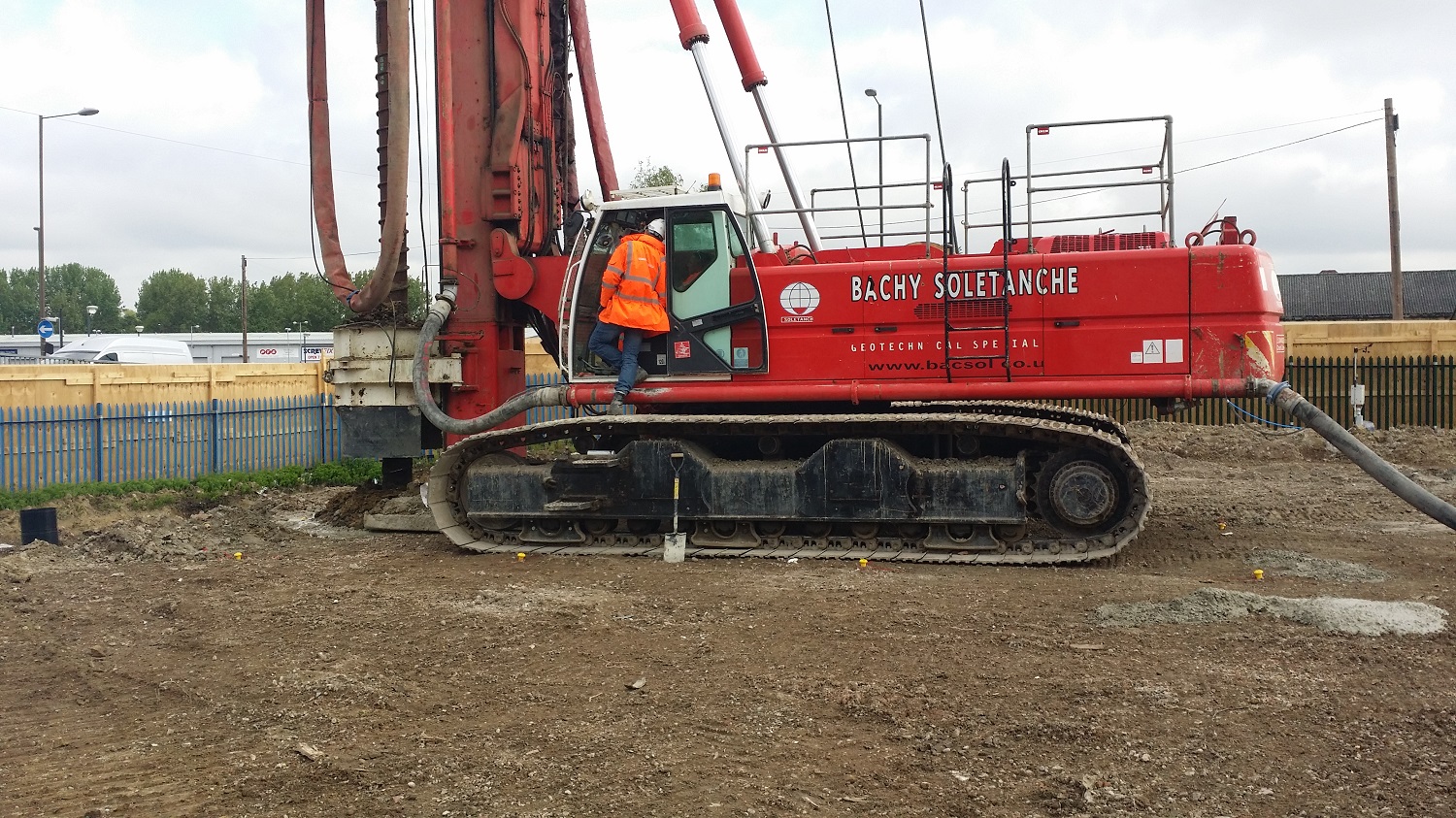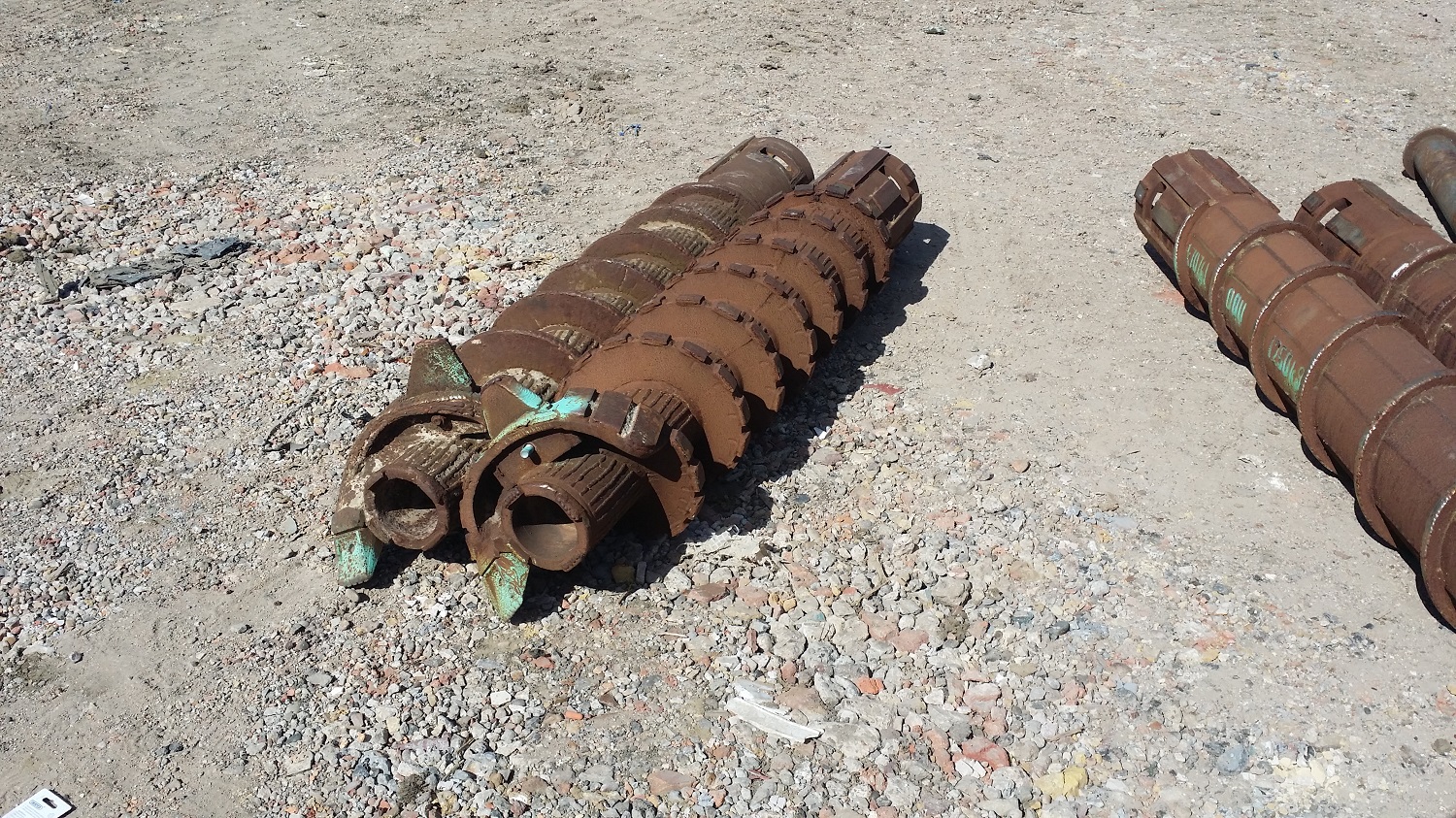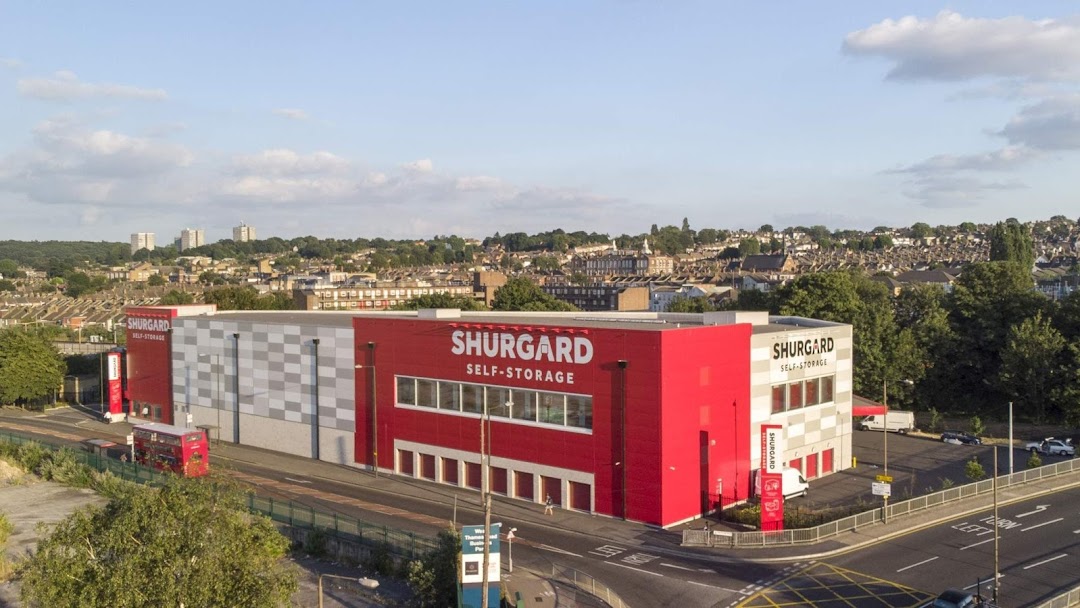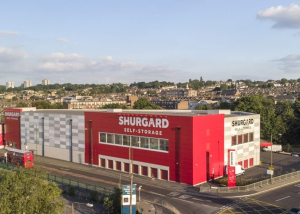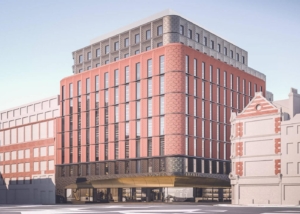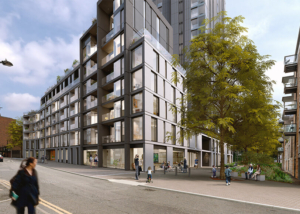THE SCHEME
Bachy Soletanche was appointed to deliver the foundations for a new self-storage facility in Woolwich, London. The £11m structure contains over 1,300 individual units, providing nearly 11,000m2 of storage space across four floors.
DESIGN AND GROUND CONDITIONS
The site, located on the former Woolwich Arsenal munitions factory is contaminated with asbestos and heavy metals from years of industrial use. The ground was made up of peat overlying river terrace gravels and Thanet sands, which led to the design team opting to use Screwsol, a continuous helical displacement solution. In addition to this, the new Crossrail tunnels are located directly beneath the site, with the tunnel crown only 19m below ground level. This limited the depth, and hence potential capacity, of piles installed above these tunnels.
The use of Screwsol piles over traditional CFA meant a higher load capacity per metre of pile, allowing the reduction in numbers required. This approach meant the pile numbers were reduced from approximately 1,400 CFA piles, down to 335 Screwsol piles. Due to the contaminated nature of the site, the project had a challenge for no spoil to be removed from anywhere from the site.
CONSTRUCTION
The Screwsol technique resembles standard CFA methodology in terms of the tools used and concreting process. A Screwsol cut head auger is essentially 350mm in diameter with an additional cutting edge protruding a further 75mm. Subsequently this produces a 350mm diameter pile with 75mm helical flights protruding from it, resulting in an actual central core diameter of 350mm but an effective diameter of 500mm. This increases the surface area and geotechnical capacity of the pile.
As the bore progresses, the auger displaces the ground it is going through, increasing its relative density. This method eliminates spoil arisings and is therefore an excellent method to use in non-dense, non-cohesive or semi-cohesive and/or contaminated ground.
The team achieved an average output of 22 piles per day over the course of the project, constructing a total of 3,166 linear metres of piled foundations, with a bored depth of 9.45m. During the completion of the initial piles, it became apparent that the ground strength encountered was greater that expected in the design, resulting in challenging drilling conditions. Through the discussions with the design team, a number of piles were shortened to 7.5m, whilst still maintaining the required loading capacities. This approach ensured the scheme was delivered successfully and on programme.
